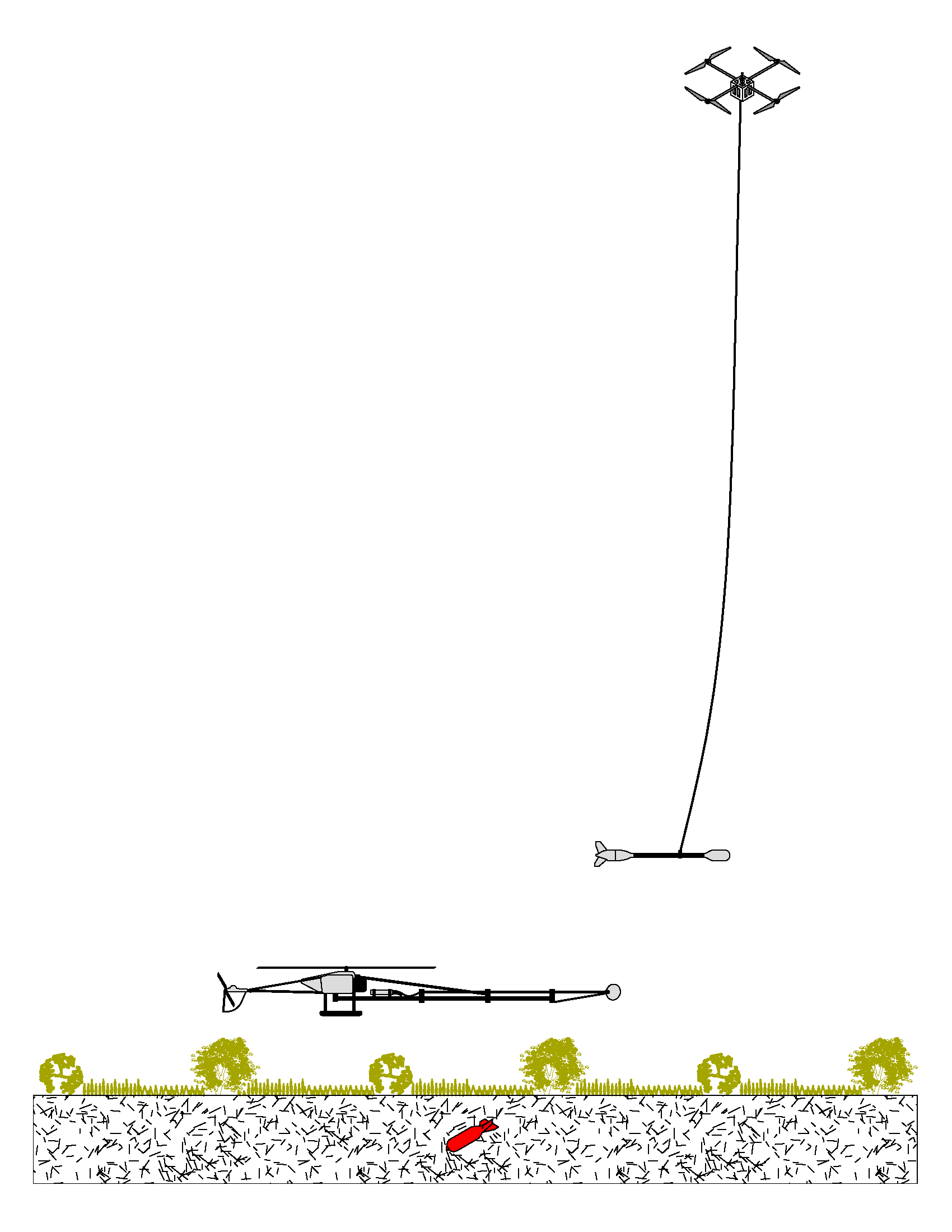FIXED-INSTALLATION vs TOWED-BIRD AEROMAGNETICS
Airborne magnetometry using a “towed-bird” suspended from the aircraft using a long cable was the norm in exploration geophysics decades ago, before digital aeromagnetic compensation became well-established. While towed-bird installations can provide substantial separation between the magnetometer sensors and the aircraft, they are highly susceptible to turbulence and bird-swing effects, and are inherently limited by logistical complexities as well as poor maneuverability and flight safety. The errors introduced by variations in altitude and orientation of the bird are significant, often greater than the magnetic interference from the platform. To achieve acceptable signal-to-noise ratios, such errors require fairly complex corrections which typically need to be implemented post-flight.
Fixed magnetometer installations on the aircraft wingtips and/or stinger, coupled with state-of-the-art automatic compensation for aircraft effects, offer a largely superior approach with lower residual errors, and none of the inherent risks and logistical issues associated with flying towed-birds. Of particular importance in applications such as UXO detection, which require flying in close proximity to the targets, fixed installations on either conventional (manned) platforms or UAVs allow stable flight at much lower altitudes above ground than towed configurations do.
|

|
|
|